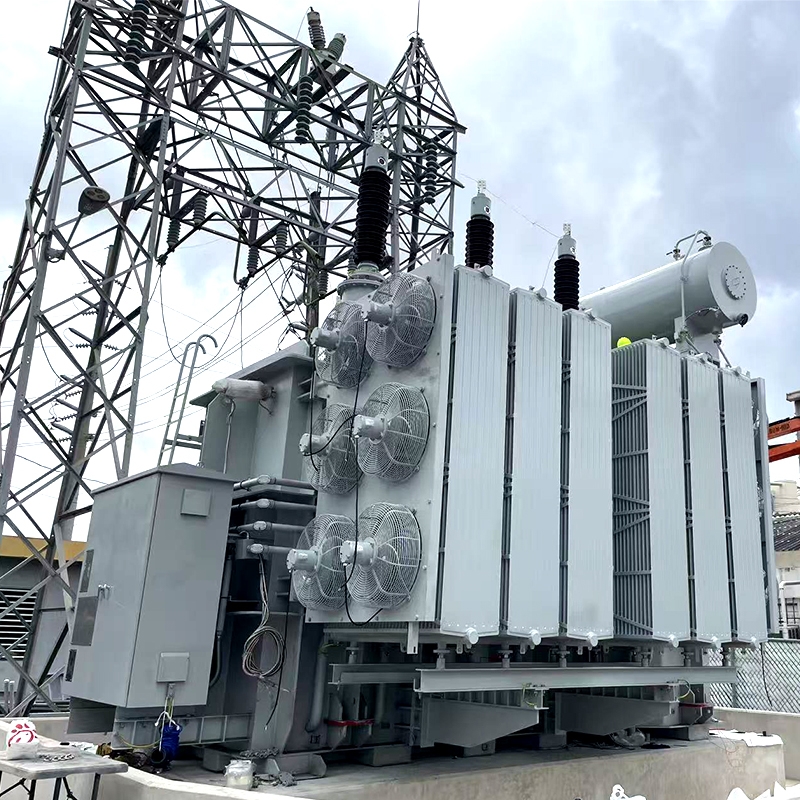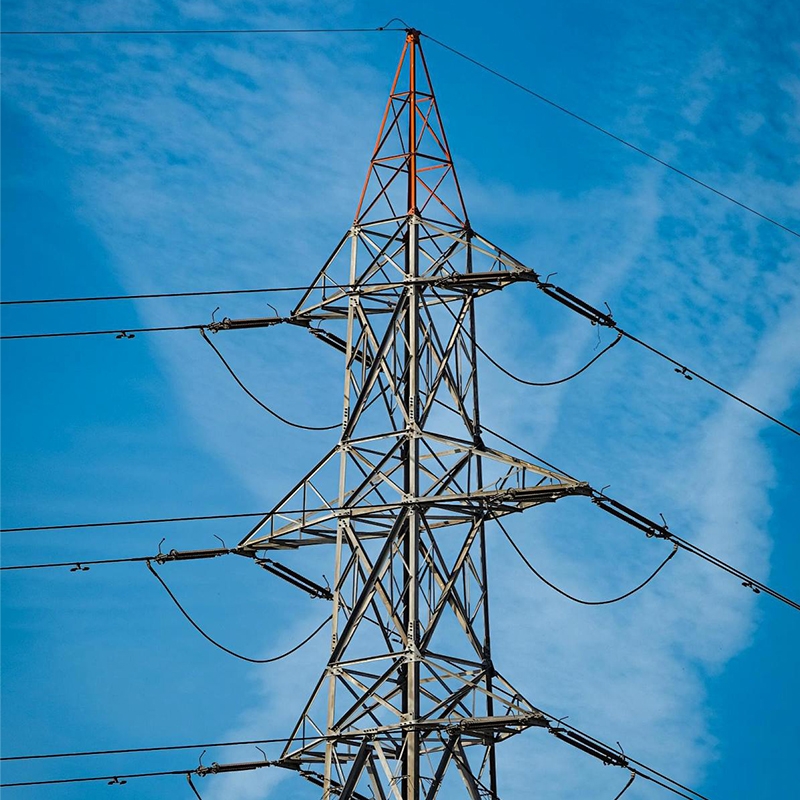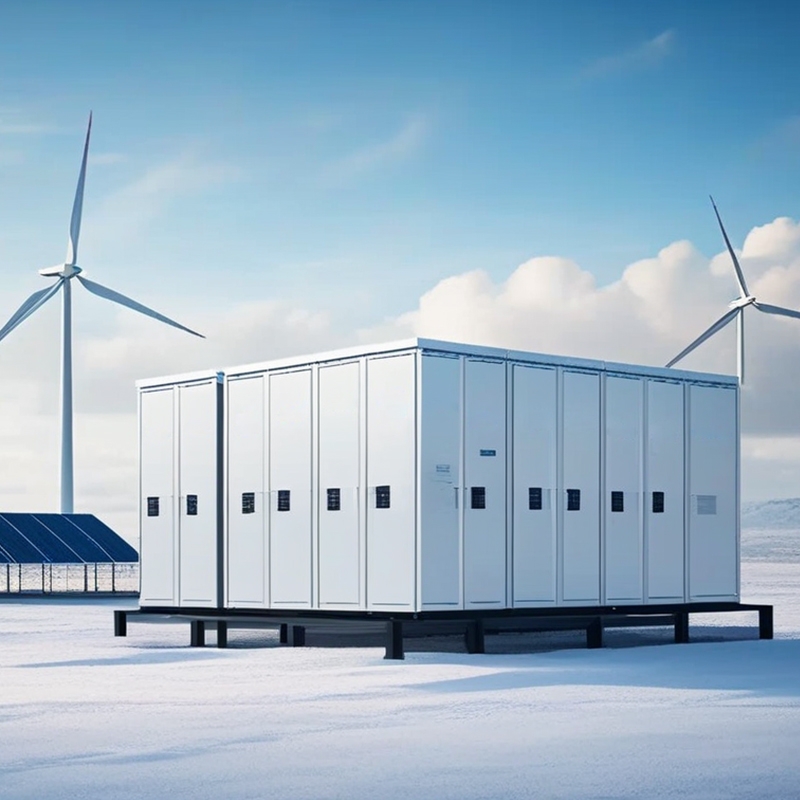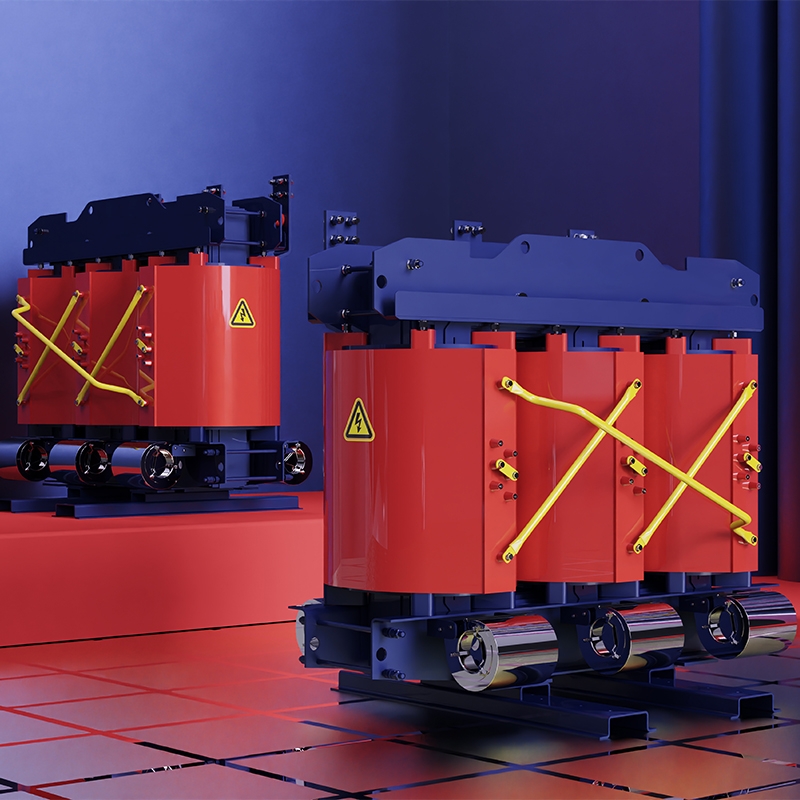Basic knowledge of dry transformer
Transformers work on the principle of electromagnetic induction. The transformer body is mainly composed of winding and iron core. When working, the winding is the "electrical" path, while the core is the "magnetic" path. After the input of electric energy on the primary side, because of its alternation, an alternating magnetic field is generated in the iron core (that is, from electric energy to magnetic field); Due to the turn chain (penetration), the magnetic force line of the secondary winding is constantly changing alternately, so the secondary electromotive force is induced, and when the external circuit is connected, the electrical energy is output outwards (that is, the magnetic field energy is converted into electrical energy). This "electric-magnetic-electric" conversion process is based on the principle of electromagnetic induction to achieve, this energy conversion process is also the working process of the transformer.
In the national standard GB1094.16, the dry transformer is clearly defined: the transformer whose core and coil are not immersed in the insulating liquid is called the dry transformer. Its insulating medium and heat dissipation medium are air. Broadly speaking, dry transformers can be divided into two types: encapsulation type and open type.
1. SC(B) type means the drying of epoxy resin casting (a B in the model represents the winding of copper foil. The B in SG(B) means the same thing). The high voltage coil is sealed with epoxy resin, and the low voltage coil epoxy resin is generally not poured into the coil, and only the end of the coil is sealed with epoxy resin (also because the low voltage side current is large, if it is completely poured, it will affect the heat dissipation). At present, SC(B) type dry transformer is the mainstream product in the market, this paper takes it as an example to analyze. SC(B) type insulation grade is mostly F class, a few are H class.
2, SG(B) type is an open dry type transformer, it uses the United States DUPONT company's NOMEX insulating paper for turn insulation. The low voltage coil is copper foil, and the high and low coils are insulated with VPI (vacuum pressure dipping). The surface is sealed with a layer of epoxy insulating paint. SG(B) type dry type transformer insulation grade is mostly H class, a few are C class.
3, there is also a dry change, model SCR(B) type, it is non-epoxy resin casting encapsulation. All wrapped in NOMEX paper and silicone, is French technology, this product is in very little demand. SCR(B) type dry transformer insulation class is H class.
02 Advantages of dry transformer
1. Safe, flame-proof, explosion-proof, pollution-free, can be directly installed in the load center;
2. Maintenance-free, low overall operating cost;
3. Good moisture-proof performance, can operate normally under 100% humidity, can be put into operation without pre-drying after shutdown; 4. Low loss, low local discharge, low noise, strong heat dissipation, forced air cooling conditions can be 150% rated load operation;
5. Equipped with a perfect temperature protection control system to provide reliable guarantee for the safe operation of the transformer;
6. Small size, light weight, less space, low installation cost.
03 Disadvantages of dry transformer
1. Under the condition of the same capacity and voltage level, the dry price is more expensive than the oil;
2.. Dry type transformer voltage level is limited, the general voltage level is up to 35KV, up to 110kV;
3. Generally used in the house, when used outdoors, must be equipped with a higher level of protection cover;
4. For the molded coil, when it is damaged, it is often scrapped and difficult to repair.
04 Structure of dry transformer
1. Winding
(1) Layer winding: The flat or round conductor is laminated according to the helix wound, can be wound into a number of wire layers, each layer of turns between the layer insulation or ventilation channel, relying on the mold and the use of special pouring equipment, in the vacuum state of the winding pouring and curing molding. Process: lamination winding → placing mold → vacuum pouring.
(2) Foil winding: composed of thin and wide conductor layers wound into each layer of 1 turns, the insulation between the layers is also the turn insulation foil winding general meters of axial airway: winding will be drawn in the corresponding number of turns position together, and then take out, forming an axial air channel in the foil winding machine after winding as long as heating curing can be formed, no mold and pouring.
Why is the high voltage winding on the outside and the low voltage winding on the inside?
Because of the low voltage on the low voltage side, the required insulation distance is small, and the distance between the core and the iron can be reduced inside, so that the volume of the transformer can be reduced and the cost can be reduced. At the same time, the high pressure side is generally equipped with a tap extraction head, which is convenient and safer to operate outside.
2. Iron core
(1). Multiple pieces of silicon steel coated with insulating paint are laminated; (2) The clamping of the iron core is mainly achieved by the clamping part and the clamping screw;
(3). The upper and lower clips tighten the core winding through the pull screw or pull plate;
(4) The insulation parts of the core are clamp insulation, screw insulation or pull plate insulation;
Why should the core be grounded?
When the transformer is in normal operation, the core must have a little reliable ground. If there is no grounding, the suspension voltage of the iron core to the ground will cause the intermittent breakdown and discharge of the iron core to the ground, and the possibility of forming the suspension potential of the iron core is eliminated after the iron core is grounded at one point. However, when the iron core is grounded at more than two points, the uneven potential between the iron core will form a circulation between the ground point, and cause the multi-point ground heating fault of the iron core. The fault of the transformer's iron core grounding will cause local overheating of the iron core, and in severe cases, the local temperature rise of the iron core will increase, resulting in tripping accidents.
The local molten iron core forms a short circuit fault between iron chips, which increases the iron loss and seriously affects the performance and normal operation of the transformer, so that the core silicon steel sheet must be replaced to repair. Therefore, the transformer does not allow multi-point grounding, and can only have and only have one point of grounding.
3, temperature control system
The safe operation and service life of dry-type transformers depend largely on the safety and reliability of transformer winding insulation. The winding temperature exceeds the insulation withstand temperature, and the insulation is destroyed, which is one of the main reasons why the transformer cannot work normally. Therefore, it is very important to monitor the working temperature of the transformer and its alarm control. (1) Automatic fan control: the temperature signal is measured by the Pt100 thermal temperature measuring resistor embedded in the hottest part of the low-voltage winding. The transformer load increases and the operating temperature rises. When the winding temperature reaches 110°C, the system automatically starts the fan cooling; When the winding temperature drops to 90°C, the system automatically stops the fan.
(2) High temperature alarm, overtemperature trip: the winding or core temperature signal is collected by the PTC nonlinear thermal temperature measurement resistor embedded in the low voltage winding. When the temperature of the transformer winding continues to rise, if the temperature reaches 155°C, the system will output an overtemperature alarm signal; If the temperature continues to rise to 170°C, the transformer will no longer be able to operate and an overtemperature trip signal must be sent to the secondary protection circuit.
(3) Temperature display system: the temperature change value is measured by the Pt100 thermistor embedded in the low-voltage winding, and the temperature of each phase winding is directly displayed (three-phase inspection and maximum display, the highest historical temperature can be recorded). The maximum temperature output is 4~20mA analog. If it is to be transmitted to a remote computer (up to 1200 meters away), it can be equipped with a computer interface, 1 transmitter, and up to 31 transformers can be monitored simultaneously. The Pt100 thermistor signal can also operate the overtemperature alarm and tripping of the system, further improving the reliability of the temperature control protection system.
05 Shell of dry transformer
According to the use of environmental characteristics and protection requirements, dry transformer can choose different enclosures. IP20 protective shell is usually used to prevent solid foreign bodies with a diameter greater than 12m and small animals such as mice, snakes, cats and finches from entering, resulting in malignant failures such as short circuit power failure, and providing a safety barrier for the live part. If the transformer must be installed outdoors, you can choose IP23 protective housing, in addition to the above IP20 protection features, but also to prevent water droplets within 60° Angle of the vertical line. However, the IP23 shell will reduce the cooling capacity of the transformer, and attention should be paid to the reduction of its operating capacity when selecting.




